Type of gymnastics
Aerobic gymnastics
| Sports aerobics team | |
| Highest governing body | Federation Internationale de Gymnastique |
| First disputed | USA, 1980s |
| Characteristics | |
| Connect with us | Not with opponents |
| Mixed gender | Yes |
| Type | Gymnastic sport |
| Presence | |
| Country or region | World |
| Olympic | No |
| World Games | 1997 - 2021 |
Aerobic gymnastics
or
sport aerobics
is a competitive sport, derived from traditional aerobics, in which complex, high-intensity movement patterns and elements of varying difficulty are performed to music.
Nature of the game
The performance area is 7 square meters (23 feet) for juniors or 10 square meters (33 feet) for adults and for aerial dance and step dance.
International competitions have 9 different competitions: women's individual, men's individual, mixed, trio, group (five athletes), step dance (both eight athletes) and trapeze pass. The last four do not depend on the gender of the athletes.
Performances consist of four groups of elements. The program must be performed entirely to music.
Competitions have specific requirements for equipment, the number of elements performed, the number of lifts performed, the number of elements performed on the floor, and much more.
Performances are scored in the following areas: artistry, execution, difficulty, and the chairman of the panel of judges determines the final deductions based on deductions that change with each point code. If the score is the same, the team with the higher performance is the winner.
The long-term ultimate goal of aerobic gymnastics is inclusion in the Olympic Games.
Using oxygen
This is how the meaning of the word “aerobic” is translated. Aerobic gymnastics makes our lungs actively engage in work, accelerates blood flow, and triggers metabolic processes in the body. Such exercise uses oxygen in a person's blood circulation to produce energy. Aerobic exercise includes swimming, cycling, and long-distance running.
The difference between anaerobic gymnastics and aerobic gymnastics is that the emphasis is on strength training, short in duration, but highly intense, using large weights to increase muscle mass of the body.
The benefits of constant aerobic training are obvious: maintaining the elasticity of the joints of the body, stabilizing the functioning of the respiratory and cardiovascular systems, increasing the level of endurance of the body as a whole. Thanks to its beneficial properties, sleep patterns are normalized, appetite is improved (here you need to remember about a balanced diet) and, of course, excess fat is burned.
Competitive aerobic gymnastics
National Aerobics Championship
At the National Aerobic Championships
Aerobic gymnastics competition began in 1984 in the United States. Founded by Sport Fitness International, it was the sport's first major championship, predating the Aerobic Gymnastics World Championships by 11 years. Since 1988, individual activities have been separated by gender. The sport became popular around the world after gaining popularity in the United States when major championships were broadcast on ESPN during the peak of the fitness movement in the United States. The sport has grown in recent years in Eastern Europe, China, Argentina, Mexico, Canada and Australia among other countries, but has not grown significantly in the United States as the sport's US creators have struggled to shift the focus from fitness to sport. gymnastics. As other countries have successfully blended with their gymnastics federations, the United States, where the sport was created, has not been as successful in this transition. USAG does not officially recognize the sport as a gymnastics discipline, although the international governing body, FIG, does so.
Fig aerobics
Competitive aerobic gymnastics is regulated by the International Gymnastics Federation (FIG). The FIG develops the Competition Rules and regulates all aspects of international elite competition. In some countries, gymnastics is regulated by national federations. In 1995, the FIG recognized artistic aerobics as a new form of artistic gymnastics, organized courses for judges and coaches, and organized the 1st World Aerobic Gymnastics Championships in Paris (34 countries). In 1997, the IWGA (International World Games Association) included aerobic gymnastics in its program at the V World Games (Lahti, Finland). Since 1999, the European Gymnastics Union has held the European Aerobic Gymnastics Championships in all odd-numbered years. The leading countries that have presented world medalists are: Australia, Brazil, Bulgaria, Chile, China, France, Hungary, Italy, Japan, Korea, New Zealand, Romania, Russia and Spain.
FISAF aerobics
The International Federation of Sports, Aerobics and Fitness (FISAF) is an international non-profit umbrella organization operating in more than 40 countries. It is called "the largest fitness industry organization in the world" and "the world's largest instructor certification agency."
Briefly about the effectiveness of aerobic training at home
Before giving specific exercises, I will make a brief digression about what cardio training is and why it is needed.
Aerobic exercises (cardio exercises) are exercises that use energy obtained by your body through aerobic glycolysis. That is, energy is released when carbohydrates and fats are broken down in the presence of oxygen.
In terms of value for the body, proteins come first, then fats, and then carbohydrates. Accordingly, it will be carbohydrates that he will consume first. And until he spends it, he won’t start eating fats.
In order for the fat-burning effect of aerobic training to manifest itself, it must last at least 20-30 minutes. During this time, the glucose accumulated in the muscles will be used up, and your body will have no choice but to part with the subcutaneous fats carefully stored for a rainy day.
How long should a cardio workout at home be? My answer is: if you haven’t worked out before or you’ve had a long break, you shouldn’t train for more than an hour at once. In other words, 45-60 minutes will be enough for you. For trained participants, the training can be extended to 90 minutes. There is no need for more - you will create too much stress for the body, which, of course, will not lead to anything good.
Rules for performing cardio exercises at home
Cardio or aerobic exercise at home should be chosen taking into account the size of the training area (your home gym).
Here are some rules for a successful cardio workout at home:
- Take care of your joints. Exercises involving shock loads on the legs (running, jumping, etc.) should be performed in sneakers (yes, we don’t jump barefoot on laminate flooring) or by laying a soft rubber non-slip mat. Take care of your joints and the peace of your neighbors below.
- Music. Take care of the musical accompaniment in advance. Turn on loud fast rhythmic music, cheer up and you can start!
- Diversity. Combine different aerobic exercises, alternate them and perform different variations, since doing the same thing for an hour is not very interesting, and to achieve the effect it is important to enjoy the workout. Choose a few exercises and perform them in sets. During training, try to include the muscles of the whole body in the work, add arm movements to jumping, etc.
- Pulse. Remember that for an effective cardio workout you need to raise your heart rate to 60-80% of your maximum. This value is calculated using a special formula, depending on age and heart rate at rest. It is also worth considering the physical fitness of the trainee.
In this article I will not dwell on calculations, I will simply say that for most women 20-40 years old, without physical limitations, the optimal heart rate for fat burning is in the range of 120-145 beats per minute.
What to do if you don't have a heart rate monitor? Test yourself as follows: with a good cardio load, it will be difficult for you to talk (your breathing will be shortened). If while running or jumping you can calmly talk to your girlfriend on the phone, you are not training, but simply wasting time.
Aerobic exercise at home
Below I will list basic aerobic or cardio exercises that you can safely perform at home. Don't stop at just one thing, combine and modify basic exercises, create the perfect workout for yourself!
Running and jumping
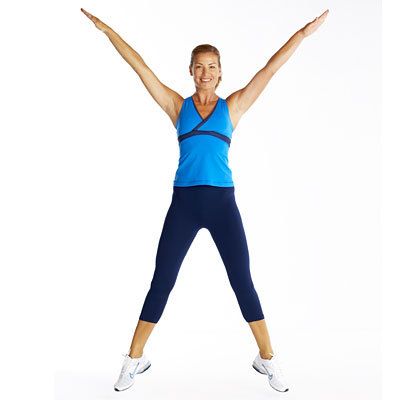
Jumping is a great cardio exercise.
The small size of an apartment does not always allow for running in the traditional sense of the word. Therefore, running in place is the best way out. The important thing here is to do the exercise - lazy trampling from one leg to the other will not have any effect. The movements should be energetic, as if you were working out in the gym under the watchful gaze of the harshest trainer.
- Running in place (classic). This exercise is a good way to start your home workout. Run at the pace of the music, help yourself with your hands, work intensively with your elbows.
- Running with high knees. Without slowing down your running pace, raise your knees as high as possible. Bend your elbows and place your palms forward. We touch our knees to our palms.
- Running with overlap (when running, we touch our heels to our buttocks). Place your palms on your waist or clap overhead.
- Jumping in place. Alternate small quick jumps and deep squat jumps. Do jumping moves with your feet together and your feet apart. When your legs are together, lower your arms down; when apart, clap your hands above your head.
Jumping up
Jumping is a more complicated version of jumping. This exercise should be performed in several approaches, alternating with running or simple jumping or other less energy-intensive exercises. Jumping jacks are a great option for high-intensity cardio at home because they don't require a lot of space.
- Keep your back straight, feet shoulder-width apart. We do a deep squat, touch the floor with our hands, jump sharply up, and reach for the ceiling with our hands. We land softly on slightly bent legs and go back into a squat. Do this exercise as many times as you can. Jumping not only provides an excellent workout for the cardio system, but also tones the muscles of the legs and buttocks.
Jumping while lying down
This is a variation of the previous exercise, during which the abdominal muscles receive additional load.
- Starting position – standing straight, feet slightly wider than shoulders. On the count of one, we squat down, placing our palms in front of us on the floor. On the count of two, we transfer the weight to our hands, jump back with our legs, and take a prone position. On three, we jump to return our legs to our hands. Four - we get up (return to the starting position). This is one repetition. You can make this exercise more challenging by adding jumping jacks.
Kicks
Kicks came to fitness from kickboxing. They can be performed forwards, backwards or to the side.
- Starting position – feet shoulder-width apart, knees slightly bent, arms bent at the elbows, palms clenched into fists at jaw level (imagine that you are defending yourself). We hit forward and backward with the heel (the foot is shortened), with a side impact, you can hit with the lift of the leg. Perform several strokes in each direction. Do not fully extend your knee during the final phase of the impact, so as not to inadvertently injure yourself.
When performing kicks at home, it is important that there are no children, cats or various fragile objects nearby. The exercise must be performed with good amplitude, putting all your energy into each blow.
Aerobics elements, step aerobics, dancing
As the name suggests, these fitness workouts are primarily cardio-focused. If you have ever done aerobics or step aerobics, just choose any exercises and do them at home to music for your own pleasure.
By the way, on our website there are articles devoted to the basic steps of aerobics and step aerobics. You can also check them out:
- Classic aerobics. Basic steps
- Step aerobics. Basic steps
Well, if you've already worked hard enough, done a few sets of jumping jacks, ran around and kicked a figurine off the shelf while doing kicks, or if your favorite song just started playing - relax and dance a little!
How to breathe correctly during training?
Proper breathing during sports is the basis of a harmoniously performed exercise that brings real benefits to the body.
Rules:
- breathing should be deep, not shallow;
- uniform inhalations and exhalations;
- inhale only through the nose, and exhale through the mouth.
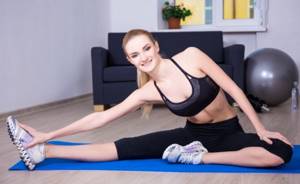
Principles of breathing during the lesson:
- Cardio training: if a person is jogging, then inhale for 2 steps, exhale for 2 steps.
- Strength training: exhale at maximum effort, and inhale at minimum.
Immediate effects of cardio training
At the end of the article, I will say a few words about the effect you will feel immediately after training. Blood flow to tissues and organs will increase, you will perk up, your metabolism will speed up, your mood will improve and lightness will appear throughout your body.
The aerobic exercises given in the article will help you create a complete cardio workout for yourself at home. Exercise at least 3 times a week and after 4-5 workouts you will notice how your figure begins to tighten. In a month, look at yourself in the mirror - you will like it!
Nutrition before and after workouts
Cardio training for burning fat at home works quite successfully. It is important to organize the correct diet on the days of the event:
- It is forbidden to exercise immediately after eating;
- It is advisable to eat 2 hours before the start of class. During this time, the body will be saturated with slow carbohydrates, protein, and due to the released energy, strength will appear for training;

- With the end of classes, the fat burning system continues to work in the body. This means that half an hour after this, you need to eat foods rich in fast protein. And after another 40 minutes it’s the turn of slow carbohydrates.

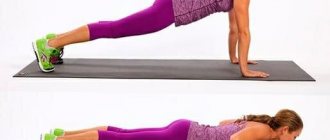

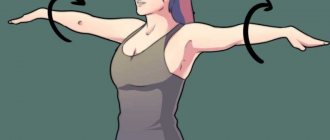
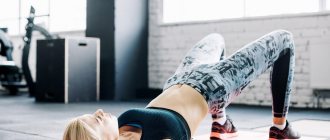
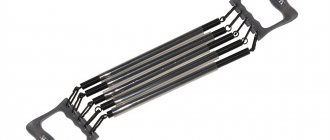

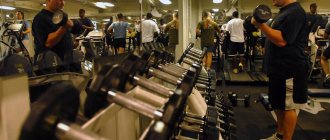



![Cardio training for burning fat at home [video selection]](https://activel.ru/wp-content/uploads/kardio-trening-dlya-szhiganiya-zhira-doma-video-podborka-330x140.jpg)